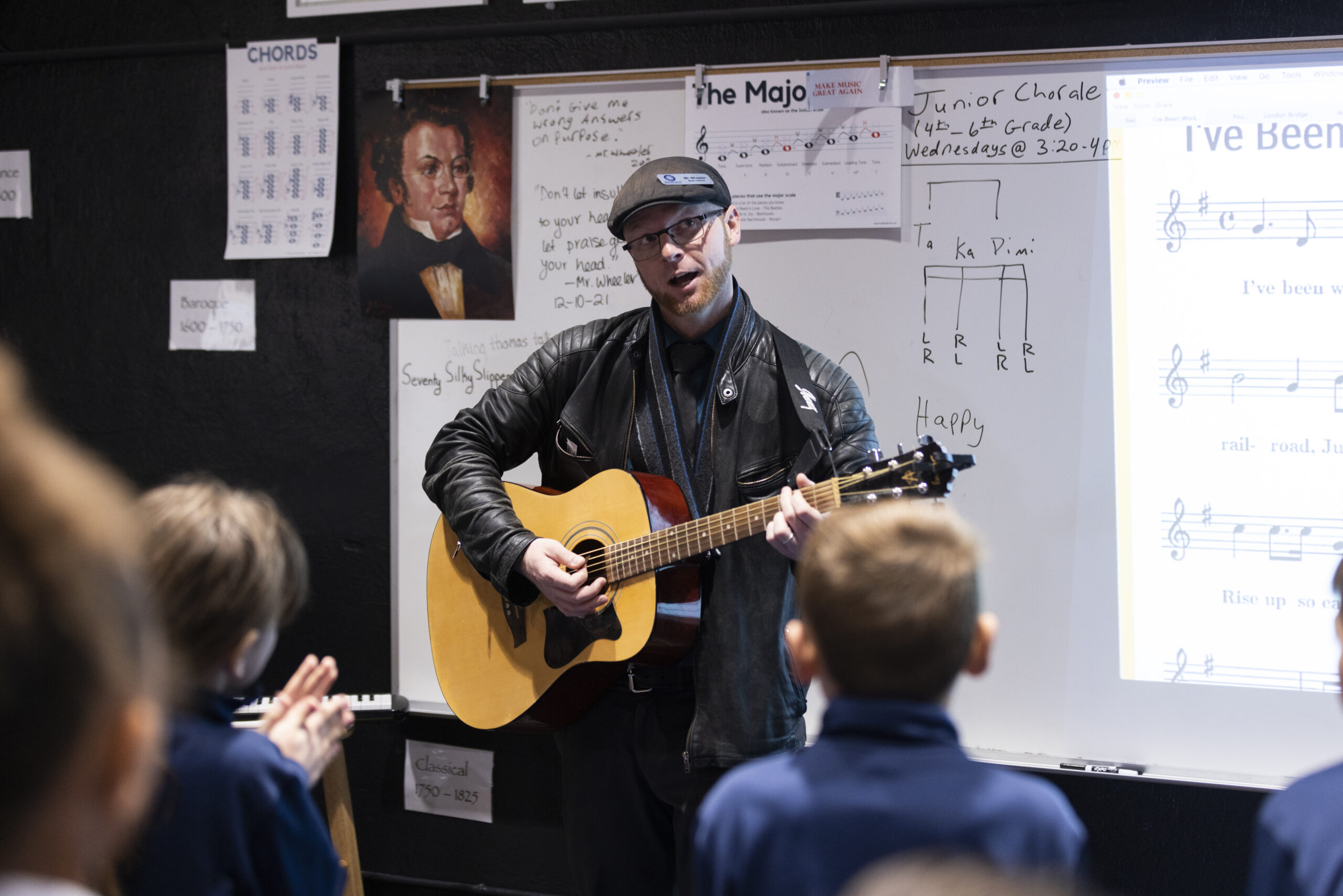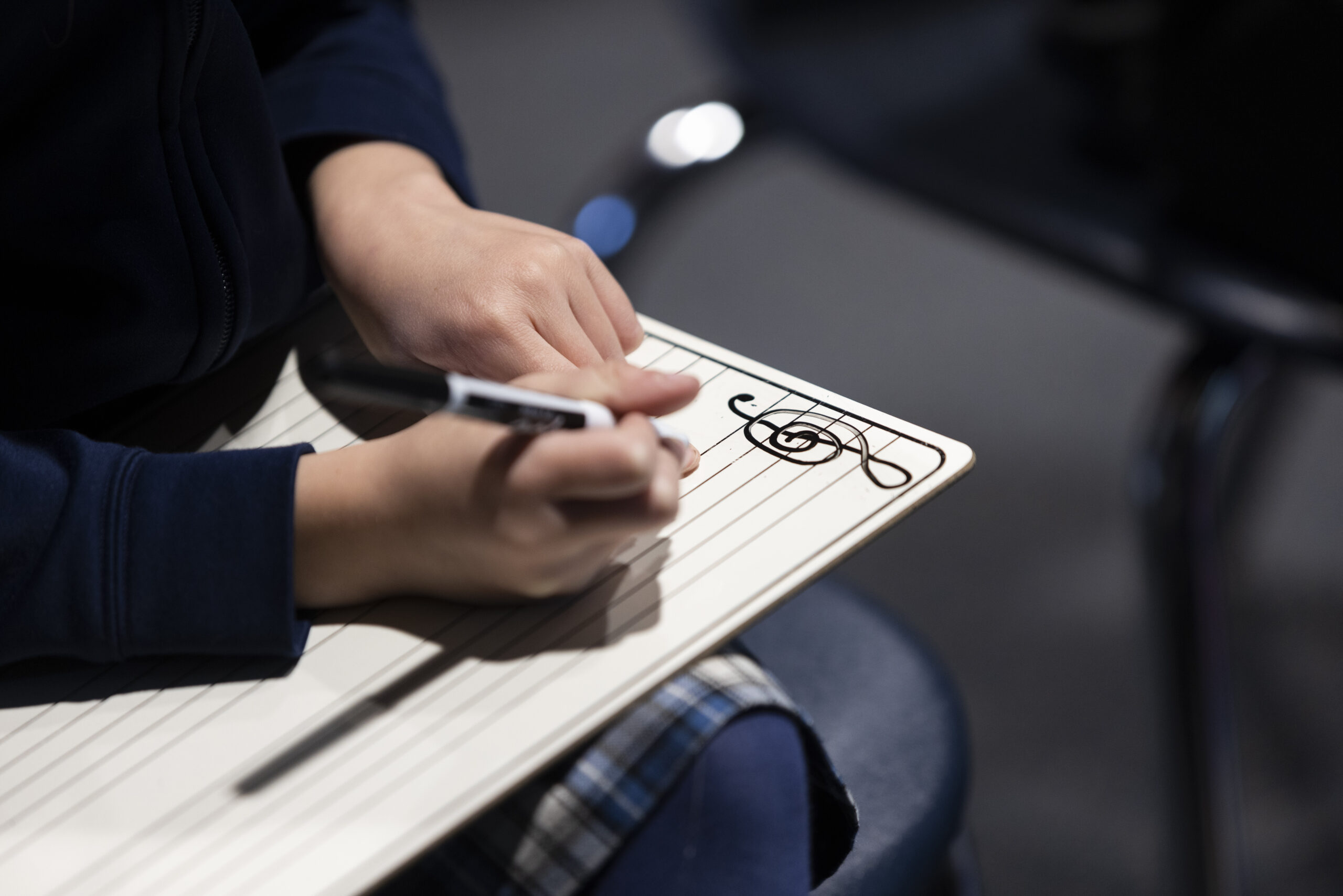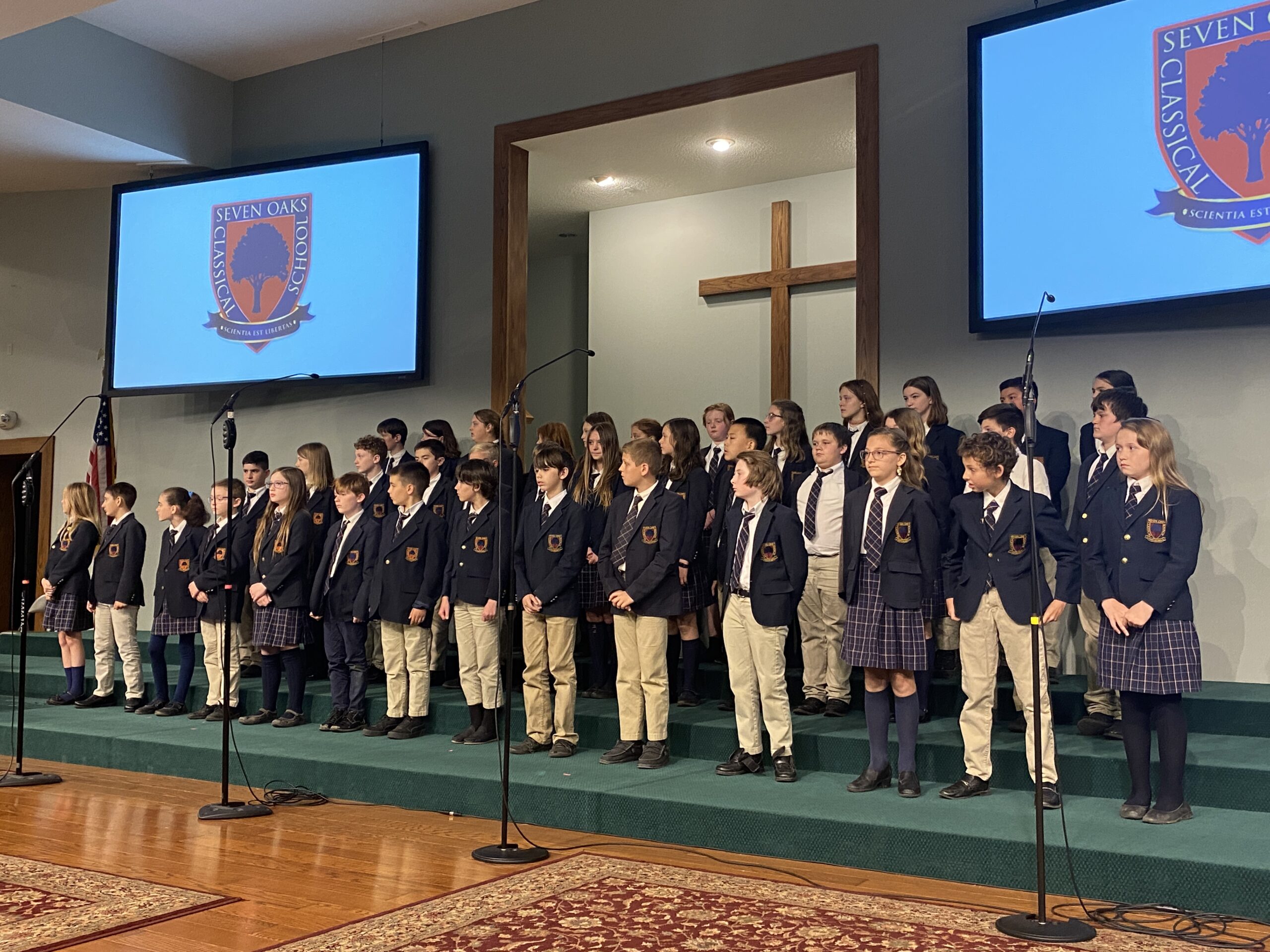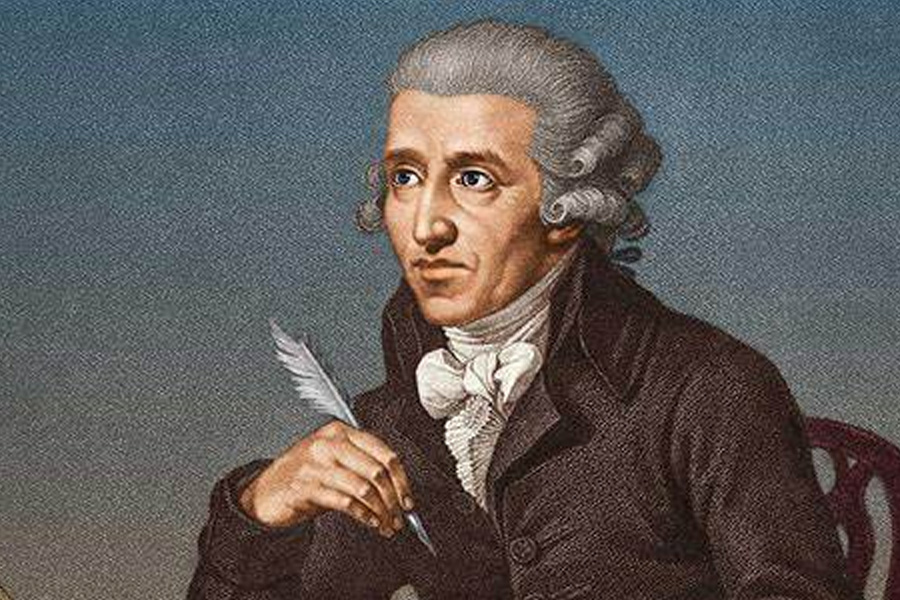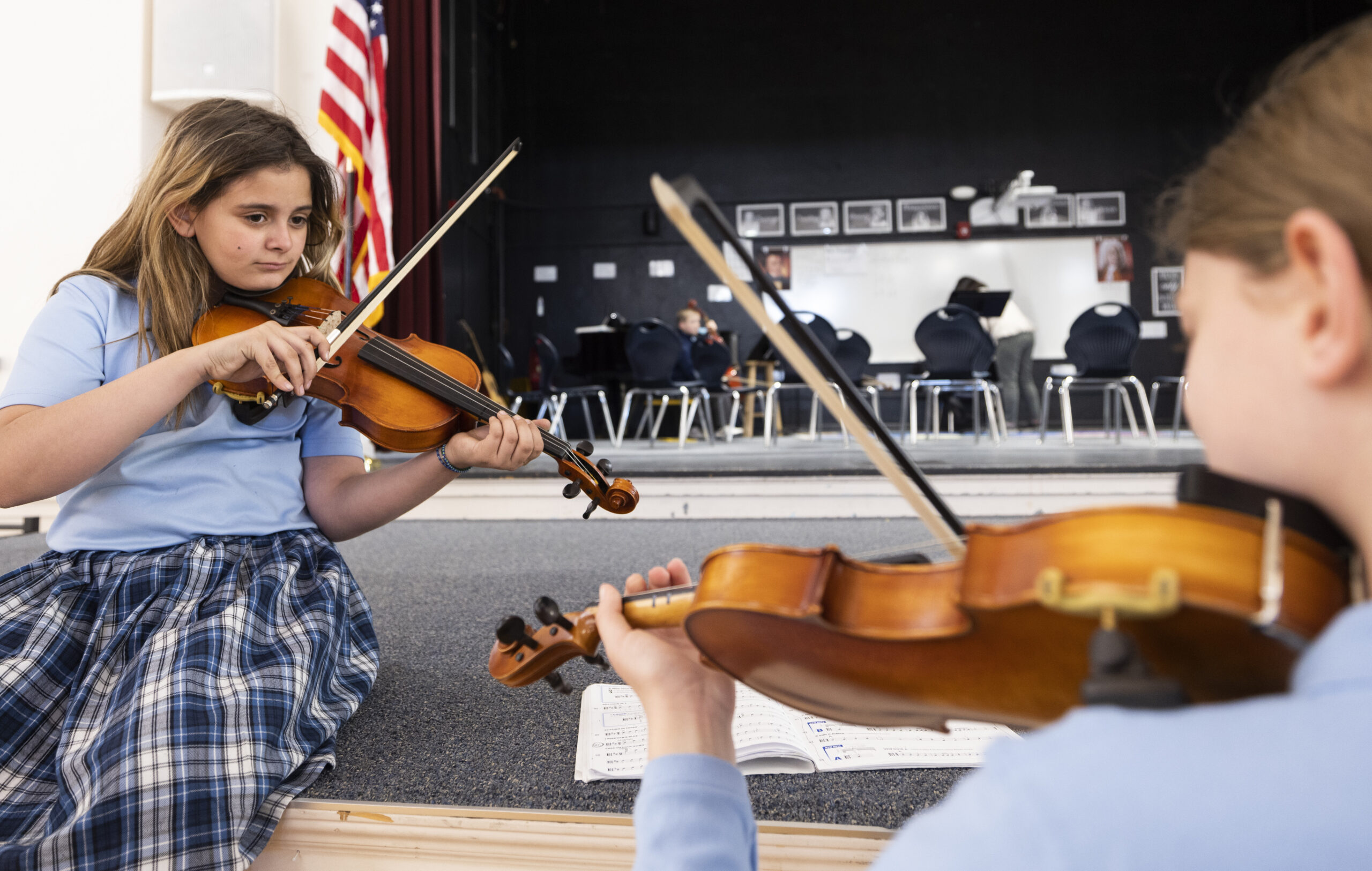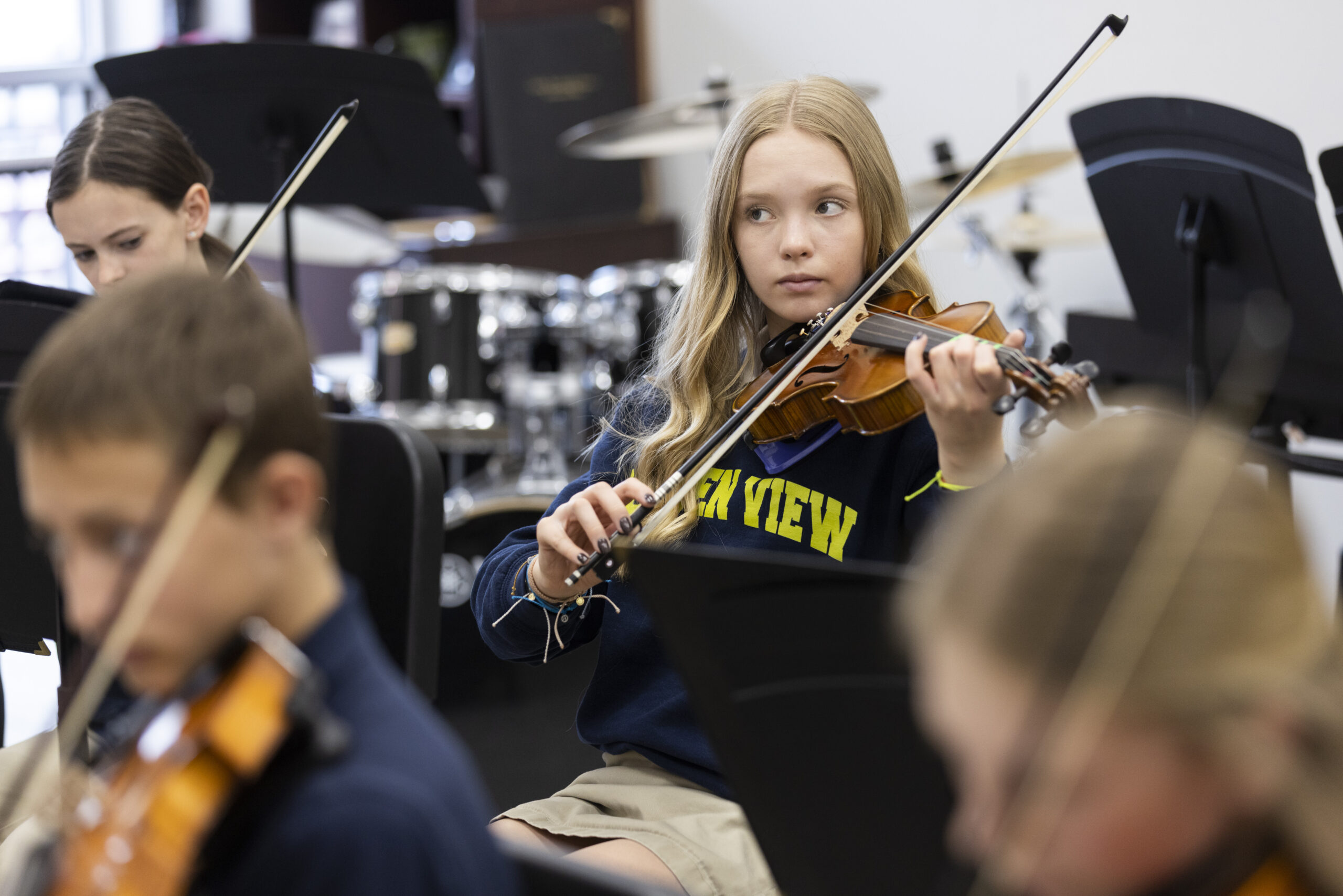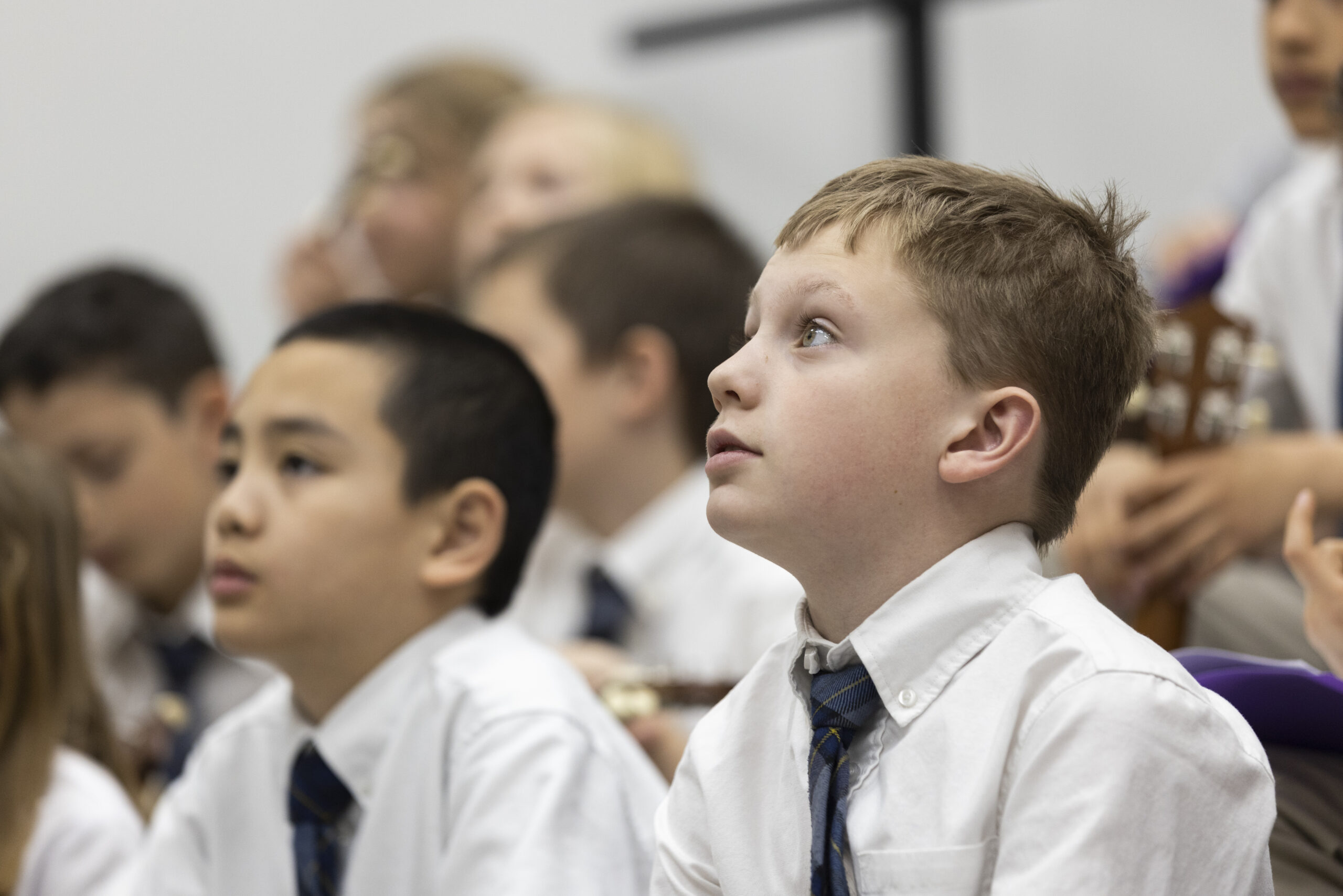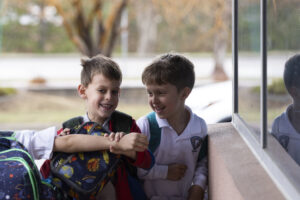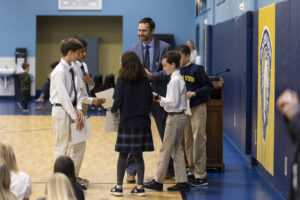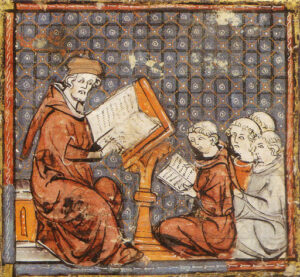an introduction to Hillsdale College’s approach to teaching Music in the K-12 years

Music
In a culture that has largely relegated music education to a subset of students who hone it as a skill, classical schools have the privilege of returning it to its proper place in a holistic and human education, not as a supplemental or extracurricular study, but as a primary lens of understanding the world and ourselves. Historically, music has been an indispensable part of a liberal education, central to how humans experience the world and behold the wonders of order and beauty. Plato recognized its capacity to direct students towards the good and to maintain the proper order of the soul, writing, “Music is a moral law. It…leads to all that is good and just and beautiful.” Music puts us in proximity to beauty, and it is beauty which most naturally trains the soul, shaping its delights and giving it a taste for the eternal. Music thus plays an important role in “liberating” us to discern and pursue the highest things.
Too many schools treat music as nothing more than a repeating process of practice and performance, and believe that it is primarily active and productive, and that it is intended for musically gifted students. Since many music teachers have been trained in that same system, it takes a conscious reorientation to adopt a new (or really quite old) definition of what music is and does. We must begin by recalling music’s end and final purpose, which is not performance or production, but raising students to love and participate in the beauty of excellent music for their entire lives. Even our best students will likely forget aspects of music theory or eventually neglect their instruments, but all students will encounter music throughout their lives. Our job is to cultivate a love for the beautiful, to hone a taste for the excellent, and to develop tools for a lifetime of understanding and appreciating music in all of our students.
In order to achieve this broad end of education, teachers should approach music from several academic angles. First, we should promote music appreciation through exposure to great music and offer opportunities for reflection and discussion. Developing a palate for great music is important, and teachers bear the responsibility of shaping healthy affections in their students. We should expose them to the best of our musical canon frequently and repeatedly, resisting the urge to use “musical fluff ” as a hook for their attention, and we should teach them from their earliest years that the truly beautiful is what most deserves their precious attention. Understanding music requires time, experience, and maturity. Cultivating this skill in our students requires frequent opportunities for discussion and guidance from teachers in the form of both excellent questions and our own example of analysis and reflection.

Second, music should be approached through music history, which is a necessary prerequisite for understanding music. Developing a cohesive historical framework will help students make meaningful connections between other disciplines and keep music from becoming an isolated pursuit (which happens all too frequently in the fine arts). More importantly, developing a historical framework is critical for becoming a mature music listener. When our students attend a classical concert, a brief glance at the program should set their minds at work; if they understand what time periods they will hear and can predict the characteristics and features at work in each, they will have a tremendous advantage for maturely digesting and enjoying the performance. This is the purpose of music history: not to know a series of disjunct names and dates, but to build a framework of patterns and paradigms that can equip our students to absorb music thoughtfully.
Art is not created in an historical vacuum, but in intellectual, artistic, and historical contexts, cultivating an affection for a work of art requires understanding these contexts. Much of the foundation is laid in the core curriculum of a classical education. Students learn the intellectual, artistic, and historical movements as the movements sweep through history, philosophy, literature, art, or science. This provides an opportunity for Socratic questioning: the process of the teacher asking a probing question and getting out of the way for the student to discover the answer based on their prior knowledge. This also is the place for making meaningful cross-curricular connections—drawing links to other fields of study in order to bridge a gap that is otherwise too wide for students. Because students can draw conclusions about a period of history by looking at the art, considering the philosophies, and hearing the rhetoric of an era; they can use this information to understand music in its context.
Finally, classical education should instruct every student in the basics of music theory. This approach comes with a particular risk: we can rigorously exercise it for the sheer sake of impressive mastery. We ought instead to teach theory as a way of seeing deeply into the tapestry of composition. Theory should constantly connect back into “real music” so that it does not become a kind of dizzying maze without meaningful context. We need not restrain our students to elementary levels of theory, but we should ensure we don’t accidentally equip them with tools too complex to be used in unpacking real compositions. Theory is the most likely place to lose students in confusion or disinterest, so it is essential that we demonstrate the significant ways it can help us to unlock the order and delight of music.
Because music is composed not of words and sentences, but of pitches and rhythms; not of speakers and authors, but of singers and instruments; students must become familiar with the basic building blocks of music. Here, a basic, but foundational, knowledge of the elements of music must be taught—notation, instruments (by sight and sound), voice types, forms, and genres. With an established grammar and taxonomy, students are able to begin the process of understanding a work so they might later have an affection for it.
Music is a physical discipline.
Though the academic approaches to music are essential for training all students to be intelligent, lifelong lovers of music, they should not be our sole focus. The teacher who focuses solely on academic elements risks imparting music as a lifeless, cognitive thing. Before all else, music is meant to be made, and regardless of varied talent levels and skills, participation in creating music should be the heart of every student’s education. Music is a physical discipline. It naturally engages our bodies and resonates in them like an instrument. The physicality of music has the power to move our spirits, to imprint our memories, and to activate our minds. Music classrooms should therefore feel distinct from others in our school: they should be filled with sound, movement, and tangible ways to experience music in the body.
Students should participate in both vocal and instrumental music because these two modes promote such different experiences, tap into different bodies of repertoire, and develop different skills. Our classrooms should be filled with singing, an activity that beautifully transcends diversities in age, gender, or talent. Our bodies are vulnerable instruments to employ, but utilizing them is transformative and mercifully accessible to us all. Instrumentation can be logistically more complex, but students will benefit from exposure even to simple and accessible instruments like handbells, recorders, keyboards, or percussion. Sight-reading should not be merely theoretical to our students, but active and tangible. Every intellectual element added to their understanding should be tied back into the craft of music-making and given life through participation.

Music participation naturally overflows into performance, and this is important and healthy. Our practice should lead somewhere; our students should have the opportunity both to show and share their experience with beauty. Yet a classroom driven by performance could quickly lose its bearings. The modern paradigm, which immerses students in the volley of practice and performance like a great machine of production, can leave them with little intellectual or contextual footing to understand and approach music maturely. Healthy, holistic music education must not allow the rhythms of performance preparation to overtake the space that should be given to hearing, discussing, dissecting, beholding, and joyfully participating.
We can prioritize performance without becoming enslaved to it by treating it as an important culmination in our students’ musical development. We begin by opening a composition like a new friend, we inquire into its patterns, learn to love its subtle qualities; we start to feel that we know it, and we give ourselves to the arduous task of striving for excellence through it; and at long last, we have the opportunity not just to perform it, but to offer it as a gift to those who gather to hear. We come to realize that we have been reshaped by it and have been ourselves given a precious proximity to beauty, community, humility, and delight. Performance is a priority because it completes this process for our students and offers a new dimension into community and love that cannot be fully experienced without it. The classical music educator’s job is to guard against a production-performance mentality and make space to experience the full, communal process that culminates in a shared experience of beauty.
Participating in the full process of music and musical instruction offers our students at least two additional skills. First, they become capable of close listening, which is similar to the skill of close reading. Listening requires careful attention to detail, an inquisitive mind, and a prepared ear. Careful listening may require note-taking, as the subject of our attention does pass with time—a listener must be engaged in the moment before the music falls away. The skill of close listening should be guided by the teacher and practiced by the student until it becomes both a lifelong habit and skill. Second, our students become interpreters of music, able to share an important role between the creator of the music and its audience. Music-making is the sharing of the human experience that music expresses. It is one of the few opportunities to join with people from other times and places to express a unified idea while also adopting it as your own expression. The teacher should aspire to excellence in musical performance, simultaneously holding students to a degree of standardized performance and interpretation while allowing room for individual expression.
In the end, classical music education should be a careful balance of elements that are held together in thoughtful tension: the intellectual and the participatory, the individual and the communal, the labor and the beauty, the gifted and the struggling, the present and the future. If we can reimagine our modern paradigm and work to hold these elements in unity, we will set our students on a course to encounter the beautiful, and we will commence a pursuit that will stay with them as they depart from our care.
More Posts about Music
-
Dress Rehearsal
In this post, Mr. Punt talks through a realization he had teaching second grade boys an American love song and the place of folk songs in the human experience.… Continue reading Dress Rehearsal →
-
New Dogs, Old Tricks
Now’s the time of year we’re reviewing. Reviewing, reviewing, and reviewing. … Continue reading New Dogs, Old Tricks →
-
Music and Friendship: A Cautionary Tale
It’s nearly a necessity. Only nearly, but I really enjoy it and it’s my classroom, so I do it. At the heart of Mozart’s most well-known opera, The Magic Flute, lies a little aria (solo) that defies expectation. It’s the soprano’s big solo and, boy, do we get vocal fireworks. In fact, when the opera…
-
In Defense of Concerts
The simple fact is that music actually addresses each and every part of that. And I’m so grateful that it does, partially because it means I have a job, but also because it means that we begin pass this on: this great historical and cultural tradition – the wealth of riches that’s handed down to…
-
Just Kidding!
Even Classical composers can have a sense of humor! Master Teacher John Punt talks about a moment in class where the human side of a composer related to his students. … Continue reading Just Kidding! →
-
A Challenge for Everyone
Even a simple challenge in a friendly competition among Hillsdale member schools can encourage students to engage with the building blocks and fundamental structures of musical composition! … Continue reading A Challenge for Everyone →
-
Cultural Literacy and Music
What does it mean to be culturally literate in music? What are the benefits of this form of cultural literacy? How can a classical education contribute to this? … Continue reading Cultural Literacy and Music →
-
Embracing Humanity
It is often said that the arts are a means of sharing in the “human experience.” And while I probably heard that phrase a few too many times in my high school literature class not to hear it as cliché, there is a part of me that appreciates this time-honored saying. Our curriculum places an……

